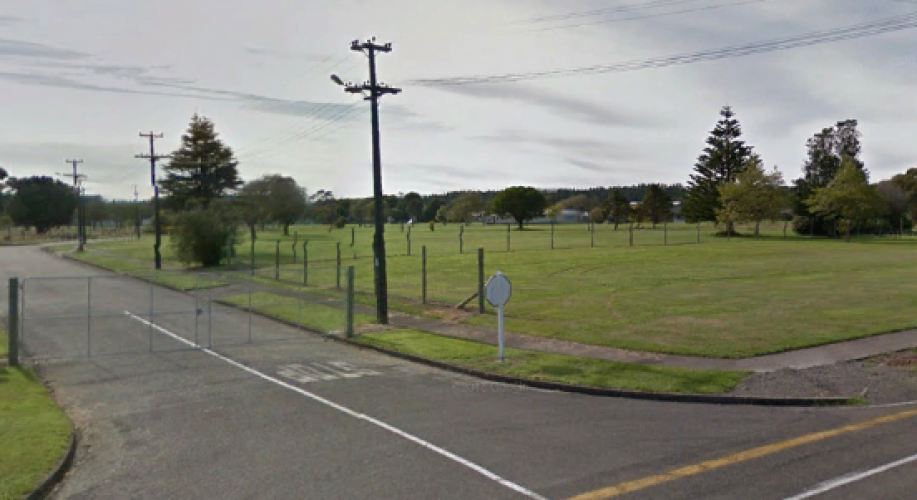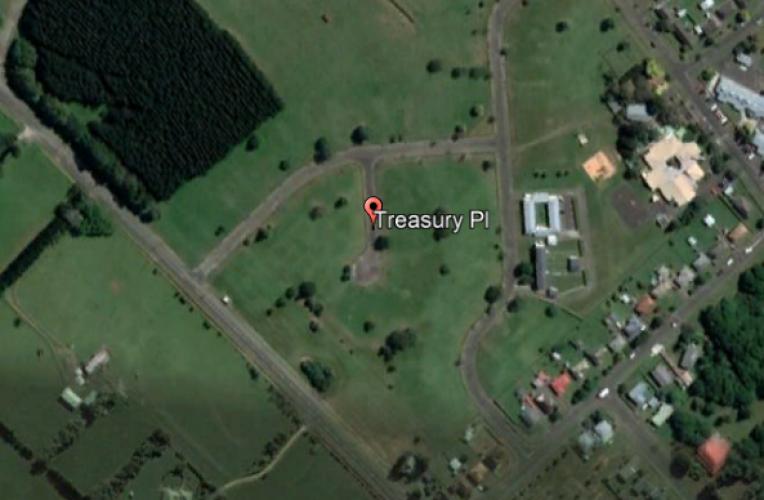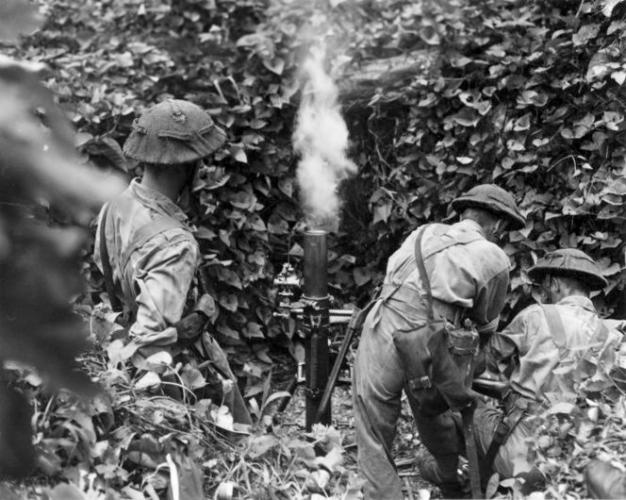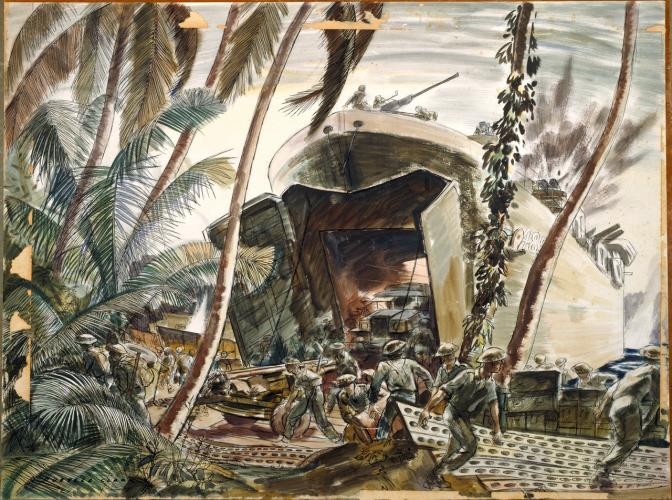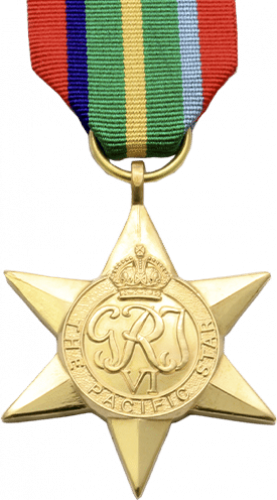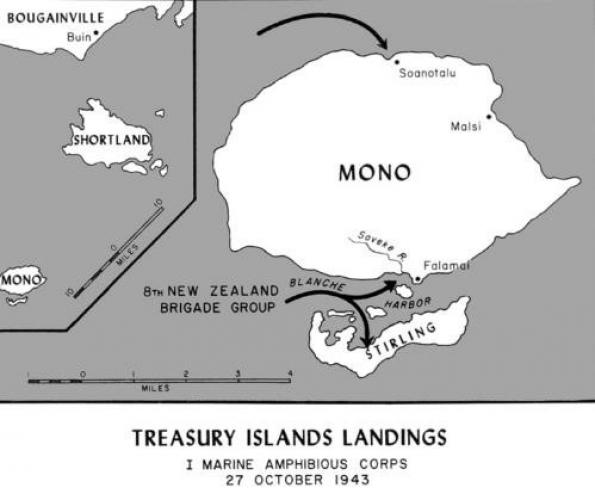281 Treasury Place Linton Military Camp Palmerston North, street scene 2018
Reason for the name
This street in Linton Camp is named as a tribute to those involved in the battle of the Treasury Islands in the Pacific during WW2. Most streets within NZDF Camps and Bases are named in honour of prominent people, battles, campaigns, ships, aircraft and places creating a rich history of our military service. Treasury Place is currently an empty street, the original houses built in the 1960s have all been demolished.
The Battle of the Treasury Islands was a Second World War battle that took place between 27 October and 12 November 1943 on the Treasury Islands group, part of the Solomon Islands. The battle formed part of the wider Pacific War and involved New Zealand and US forces fighting against Japanese troops. The majority of the ground forces were provided by the New Zealand 3rd Division.
The Allied invasion of the Japanese held island group intended to secure Mono and Stirling Islands so that a radar station could be constructed on the former and the latter be used as a staging area for an assault on Bougainville. The attack on the Treasury Islands would serve the long term Allied strategy of isolating Bougainville and Rabaul and the elimination of the Japanese garrison in the area.
Author: The Poppy Places Trust
The Allies launched the invasion of the Treasury Islands at 06:06 hours on 27 October. Three echelons of high speed transports (APDs), totalling eight vessels, were assembled for the operation. In addition, there were eight LCIs; two LSTs and three LCTs allocated. Several minor reconnaissance operations were undertaken prior to the landing, firstly on 22–23 August and then 21–22 October. Meanwhile, the assaulting force conducted rehearsals off Florida Island in the lead up.
Commencing on 27 October, following a short naval and aerial bombardment, seven APDs arrived in the transport area west of Cummings Point on Stirling Island and began disgorging their smaller landing craft, which were assigned to land forces on either side of the harbour. Despite heavy rain, which reduced visibility, the destroyers USS Philip and Pringle laid down a heavy, but ultimately ineffective pre-landing bombardment. Following this, two infantry battalions – the 29th and 36th – landed around Falamai, on the southern coast of Mono Island, approximately 2 miles (3.2 km) away from Blanche Harbour's western entrance. Meanwhile, a detachment from a third infantry battalion, the 34th, landed on Stirling Island, to the south of Mono, while another detachment of 200 personnel from the 34th, supported by the APD USS McKean, skirted around the western side of the island and landed to the north around Soanotalu, to provide security for a radar station that would be installed there.
A total 3,795 men landed in the assault wave with the remainder of the Allied force landing in four waves during the following 20 days, to reach a total of 6,574 men. The operation was the first amphibious assault launched by New Zealand troops since the Gallipoli Campaign in 1915. It was the second combat operation undertaken by the New Zealanders in the Pacific, following the Land Battle of Vella Lavella, which had taken place the previous month. The New Zealand infantry were supported by US combat support and service support units including a naval construction battalion, a signals unit, a naval base unit, and a coastal artillery battalion to provide anti-aircraft fire support.
The Japanese were caught by surprise and were unable to scramble aircraft to attack the assault craft until after the troops had landed. Subsequently, late on 27 October, a force of 25 dive bombers attacked two US destroyers, USS Cony and Philip. In the ensuing melee, 12 Japanese aircraft were shot down by supporting AirSols fighters and naval gunfire, while Cony was hit aft twice, resulting in the death of eight of her crew and the wounding of 10 others. The destroyer was taken under tow and taken back to Tulagi for repairs.
Meanwhile, ashore, the fighting continued. Resistance to the initial landing was light and was quickly overcome with only a small number of casualties, which came exclusively in the first wave of the assault. Over the course of several hours, the beachhead around Falamai was secured amidst sporadic resistance from the Japanese and then over the following days patrols were sent out to clear the island. Meanwhile, the force holding Soanotalu fought off several sharp attacks between 29 October and 2 November, including one attack by a company-sized element that resulted in about 40 Japanese being killed. On Stirling Island, the New Zealanders had been virtually unopposed and after landing had settled down to a routine of patrolling and base development. There were a few minor Japanese raids, but largely Japanese air assets were focused on responding to the landing around Cape Torokina, which commenced on 1 November.
The British flag was raised over the ruins of Falamai, the islands' capital, and civil administration was restored on 1 November. Mopping up operations began and over the course of eleven days a number of minor engagements took place as patrols sought to flush out Japanese troops that were hiding out, mainly in caves on the northern coast. These engagements resulted in further casualties on both sides, with several groups of Japanese being killed in firefights with New Zealand patrols. On 12 November, the islands were declared clear of Japanese forces, although Japanese holdouts were sighted in the jungles into January 1944.
The operation, in conjunction with Operation Blissful, a raid on Choiseul, served to divert the attention of the Japanese Seventeenth Army from the next major Allied target in the Solomon Islands campaign. The success of the operation also helped to improve the planning of subsequent landings in the Pacific. The New Zealanders' next combat operation would be the Battle of the Green Islands, in early 1944. Casualties during the operation amounted to 226 for the Allies, consisting of 40 New Zealanders killed and 145 wounded, and 12 Americans killed and 29 wounded. The Japanese lost 223 killed and eight captured.


